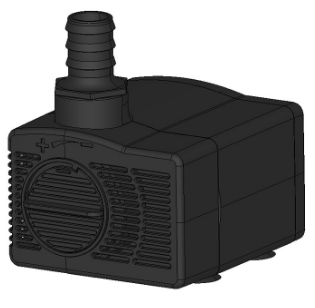- English
- Español
- Português
- русский
- Français
- 日本語
- Deutsch
- tiếng Việt
- Italiano
- Nederlands
- ภาษาไทย
- Polski
- 한국어
- Svenska
- magyar
- Malay
- বাংলা ভাষার
- Dansk
- Suomi
- हिन्दी
- Pilipino
- Türkçe
- Gaeilge
- العربية
- Indonesia
- Norsk
- تمل
- český
- ελληνικά
- український
- Javanese
- فارسی
- தமிழ்
- తెలుగు
- नेपाली
- Burmese
- български
- ລາວ
- Latine
- Қазақша
- Euskal
- Azərbaycan
- Slovenský jazyk
- Македонски
- Lietuvos
- Eesti Keel
- Română
- Slovenski
- मराठी
- Srpski језик
How to correctly choose and use a submersible pump?
2024-01-09
The entire pump body is put into the water to operate; the self-priming pump takes over the water layer and sucks the water out. In modern pastoral production, submersible pumps are becoming more and more popular among growers due to their advantages such as lower price, small size, light weight, and convenient pumping and irrigation. However, different types of submersible pumps have different functions, power, suction range, flow rate, etc. Due to the lack of professional guidance when many farmers buy them, in actual use, they often appear like a large horse-drawn cart or a small horse-drawn cart. This situation will directly lead to production losses and cost waste, and some may also cause safety accidents, affecting the service life of the submersible pump. It can be seen that it is very important to choose a safe and durable submersible pump.
First of all, you should look clearly at the brand name and product quality certificate when purchasing.

A standard and qualified water pump is manufactured according to the certification requirements of different countries and has a long life and low energy consumption. When purchasing, go to a sales point approved by the agricultural machinery department, identify the manufacturer, and read the brand name and product quality certificate. You cannot buy Sanwu products without manufacturer, production date, or production license, otherwise it will be difficult to solve problems once they arise. New users can first consult experts in the field of water pumps, or directly consult some old users who are similar to their own, so as to avoid detours.
Secondly, it is necessary to clarify the relationship between the water pump lift and the water pump flow rate.
The lift of the water pump is not equal to the water lifting height. It is especially important to understand this point when choosing a water pump. The lift of the water pump is approximately 1.15-1.20 times the water lifting height. For example, if the vertical height from a water source to the point of use is 20 meters, the required lift is approximately 23 to 24 meters. Therefore, when selecting a water pump, the head on the pump nameplate should be close to the actual required head, so that the water pump has the highest efficiency and is more economical to use. However, it is not required that the head on the nameplate of the water pump is absolutely equal to the actual required head. Generally, as long as the deviation does not exceed 20%, the water pump can work in a more energy-saving situation.
The head and water flow rate of the submersible pumps are also subject to certain considerations. If a high-lift pump is used with a low lift, the flow rate will be too large and the motor will be overloaded. If it is run for a long time, the temperature of the motor will rise, and the winding insulation layer will accelerate aging and even burn the motor. If the water pump lift is much smaller than the actual required lift, it often cannot meet the user's wishes. Even if water can be pumped, the amount of water will be very small. Therefore, when choosing a water pump, it is generally not advisable to choose too large a water flow rate, otherwise it will increase the cost of purchasing a water pump. Specific issues should be analyzed in detail. For example, if the user uses a self-priming water pump for his own draft, the flow rate should be as small as possible; if it is a submersible pump for irrigation, a larger flow rate can be appropriately selected.
Third, you must master the correct method of use
Correct operation and application are important factors in extending the life of a submersible pump and reducing economic losses. Therefore, before starting the submersible pump, first check whether the rotation of the pump shaft is normal and whether it is stuck; check whether the position of the impeller is normal; whether the cables and cable plugs are cracked, scratched, or broken. Pay attention to the voltage changes during operation, and generally control it within the range of ±5% of the rated voltage. In addition, the location of the submersible pump in the water is very important. It should be selected as much as possible in a place with abundant water, no silt, and good water quality, and it should be suspended vertically in the water. Ponds with weeds should be equipped with protective filters and should be fished out in advance. Impurities and weeds to prevent net closure. The submersible pump is not allowed to be placed horizontally at the bottom of the pond to avoid sinking into the mud or blocking the pump inlet by suspended matter, which will lead to a sharp decrease in water output or even no water pumping. Self-priming pumps should be placed in a ventilated and dry place as much as possible to facilitate rapid heat dissipation and reduce the motor temperature. When using a new self-priming pump, the protective plastic film covering the motor must be removed, otherwise the motor may overheat and burn out the coil. In addition, before each start, be sure to check the amount of water in the pump body, otherwise it will affect the self-priming performance and easily burn the shaft seal components. Under normal circumstances, the water pump should discharge water 3 to 5 minutes after it is started. Otherwise, it should be stopped immediately for inspection.




